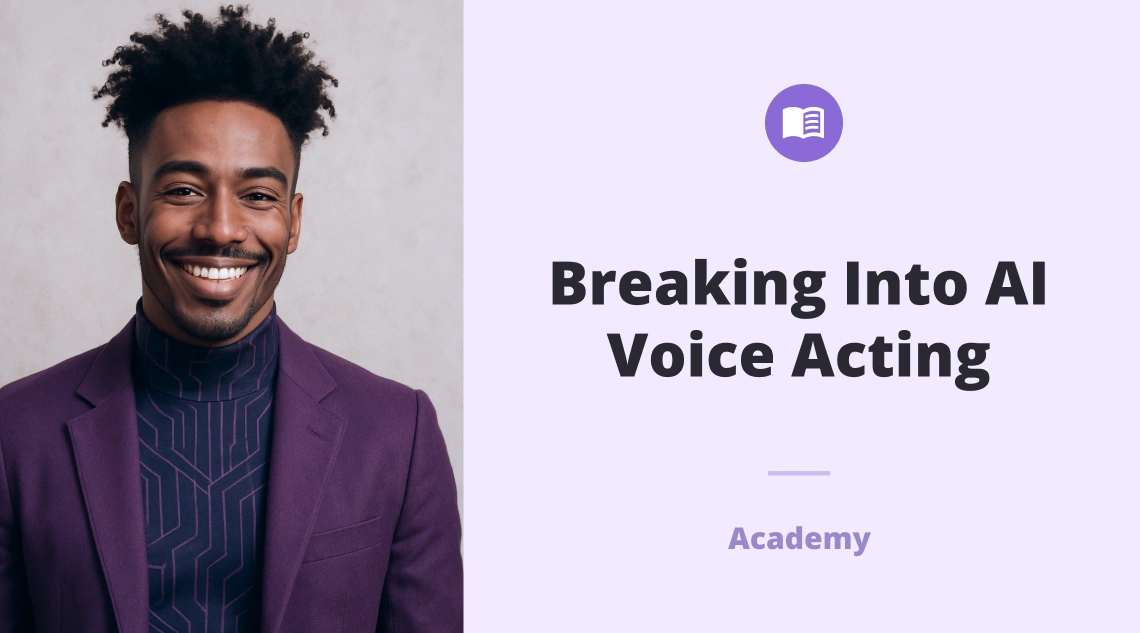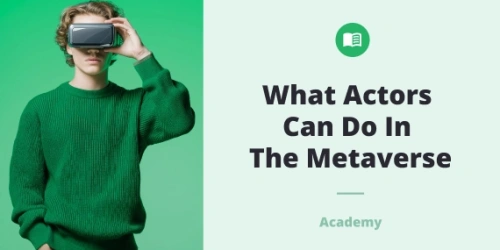Quick Summary
AI voice acting is an emerging opportunity for performers to work with cutting-edge text-to-speech technology that turns human vocal performances into digitally generated speech. Rather than replacing voice actors, AI expands the field—offering new roles in training voice models, dubbing, and content localization. Actors need strong traditional voice skills, emotional range, and adaptability, while also staying informed on digital modulation, phonetics, and voice copyright laws. As the entertainment industry embraces AI, those prepared to blend creativity with tech will thrive in this new casting frontier.
What Exactly Is This Technology?
At the very heart of AI voice acting is the technology that uses artificial intelligence to generate vocal performances. It is accomplished by using the text-to-speech synthesis technique. Through it, AI technology uses its learning algorithms to analyze a given human voice’s data, including vocal intonations and expressions, accents, patterns, and rhythms. Following the learning process, the AI technology then tries to mimic the respective human’s speech as accurately as possible to create an artificial version of that voice.
Once the analysis and the digital voice creation process are completed, the final result can be used to turn written texts and scripts into digital vocal performances. The AI technology breaks down the given written text into phonetic components in order to predict how to turn it into a naturally sounding vocal recording by using the newly created voice.
The process behind it is AI technology generating spectrogram sequences that serve as acoustic features of human speech, and then transforming them into waveforms that ultimately produce audible sounds.
The primary purpose of AI vocals is to more efficiently and rapidly produce vocal content in situations where there is not enough time for traditional voice acting, as well as original audio localization for various international audiences. It can be a cost-effective and time-saving approach to numerous tasks within voice-acting fields. Most importantly, instead of replacing human voice actors, it gives the vocal performers extra job opportunities!
What Happens During AI Voice Acting And What Is Required?
Despite the rapid advancements of AI technologies in recent years, they still are limited in terms of generating voices in ways that could in an unmistakable manner accurately replicate the realism, nuances, and depth of a human voice. Due to this, voices created by AI are still not ready to be considered as an equivalent to actual human voice actors for major usage within such plot narratives that involve multiple characters or require complex emotional performances. At the moment AI voice technology is more of a tool, and it means there has to be someone putting it at work before it can serve its purpose of making audio productions more enhanced and efficient.
These “someone” are voice actors, who are the key part of AI being capable of voice generation. Voice actors typically get hired to do the usual vocal performances as they would in more traditional projects, yet this time the purpose of recorded audio will be to train artificial intelligence, as explained above.
Obviously, AI voice actors are required to have traditional voice acting skills to be able to deliver expressive vocal performances that may have to include various accents, emotions, and patterns. The vocal performances for AI training typically have to be complex so that the technology can learn to mimic human speech realistically instead of sounding dull and monotonous, thus unmistakably recognizable as artificial.
Similarly, projects may require voice actors to perform in a unique voice that is meant to portray a specific character, e.g. for an animation film or video game. The initial voice-acting performance then serves as the template for AI technologies on how the respective characters should sound.
Another common use for AI vocal content is to localize content through voiceovers and dubbing. Yet there might be scenes where a more nuanced and in-depth vocal performance is required, so that is another example of when voice actors have to step in during a project.
What Are The Following Steps?
If a vocal performer is interested in adding AI voice acting as another field of their expertise, the process of finding gigs is the same as searching for more traditional acting jobs. Aspiring AI voice actors can explore casting calls and auditioning opportunities within casting-focused online platforms like AllCasting.
In the meantime, there are a few things outside of their usual craft that voice actors can get acquainted with to be able to deliver extra expertise to their new career ventures. Consider reading, or even taking courses or attending workshops, about how vocal tones and styles can be manipulated digitally, including learning about how phonetics can improve such modulations. A deeper understanding of the innovations and advancements involved surely can help to stand out amongst the competition for the job.
As far as the actual voice acting craft goes, aspiring AI voice actors can explore further experimentation with their vocals by trying out various different accents and ranges. Self-analyzing the performances can help improve the performance meant for AI training even before the audition time arrives.
Finally, performers should aspire to be up to date on the legal and copyright aspects of using their voices in conjunction with AI technologies. AI voice acting is a new and exciting frontier that is here to stay, and as with reaching every new horizon, the frontiersman should arrive well prepared.




